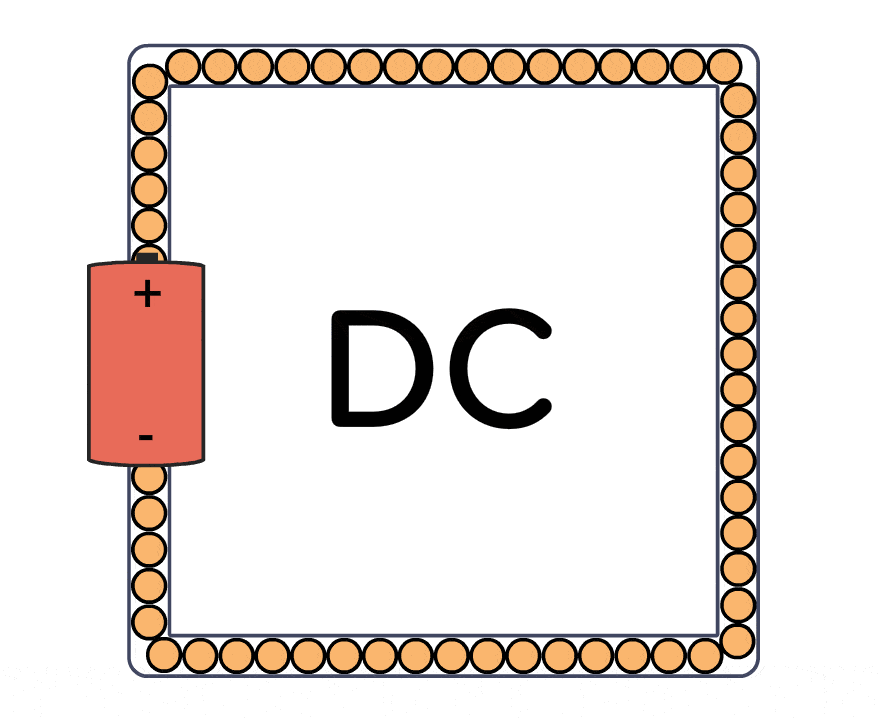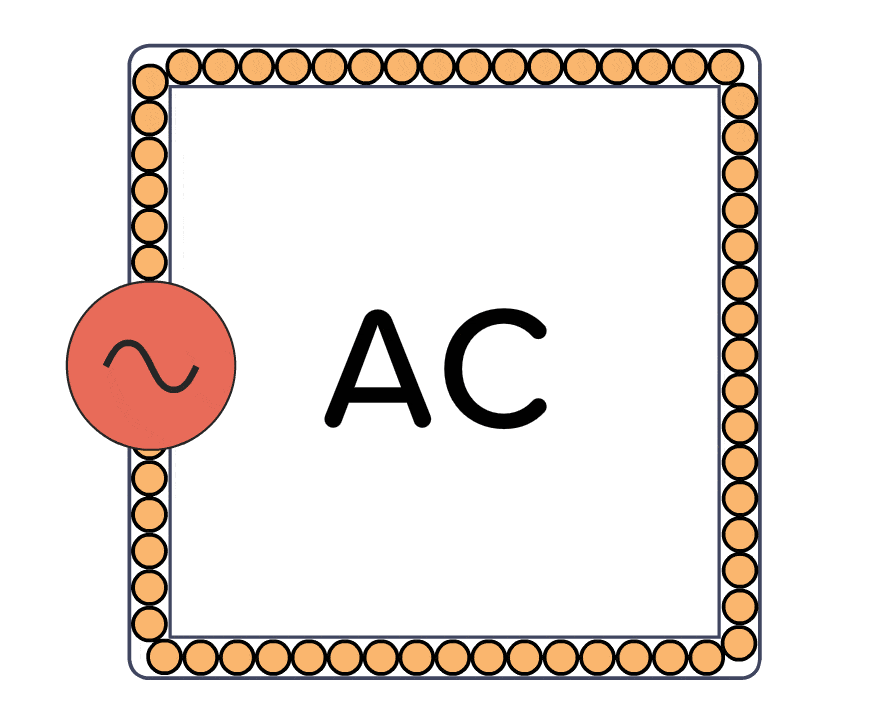The difference between Alternating Current (AC) and Direct Current (DC) is simple. AC vs DC comes down to in which direction the current flows. AC is a current that alternates its direction. It goes back and forth continuously. DC is a current that flows in one direction.
Current flow in a DC circuit:

For example, a battery provides direct current. The current only flows one way out of a battery.
The current flow in an AC circuit:

In your wall sockets, you have AC. The current keeps changing direction about 50 to 60 times per second. But for many things, you have adapters that convert it into DC before it is used by a circuit.
(Although, it could as well have been DC in our walls if Edison had won the AC vs DC war back in the late 1800s against Tesla.)
AC vs DC in circuits
You usually need DC to power most things in electronics. I’ve never had the need for a power supply that outputs AC.
But you might find that you have AC in parts of your circuit. For example in audio circuits, radio circuits, or in power supplies.
The AC part is usually either a signal that represents something, like sound. Or an oscillating voltage to send a signal out into the field, like a radio transmitter.
Learn Electronics
If you’re looking to learn electronics, I recommend you focus on learning DC circuits. Knowing what AC is, is great to know. But most of the AC circuit lessons I’ve seen out there are focused on mathematical formulas – and don’t need it until you get to a more advanced level in electronics.
If you want to learn electronics from scratch, you’re invited to join us over at Ohmify. With more than 300 lessons to choose from and a friendly community of like-minded people to help you. And at the Ohmify forum, no question is too basic.
What are your biggest questions when it comes to AC vs DC? Let me know in the comments below.
Copyright Build Electronic Circuits
No comments:
Post a Comment